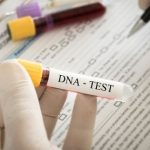DNA testing is done for many different reasons. Sometimes DNA evidence can link an alleged criminal to a crime scene or DNA paternity and maternity testing can identify a child’s father or mother. While DNA relationship testing can determine if two individuals are full or half siblings and DNA ancestry testing can determine ethnic origins and genealogical roots.
How DNA testing is done depends on the results desired and the samples available. DNA profiling is the process of analyzing and comparing two DNA samples. Only identical twins have the exact same DNA sequence, everyone else’s DNA is unique. This makes DNA the perfect way to link individuals to each other or to locations where they have been.
The entire DNA chain is incredibly long, much to long to examine all of it. Human DNA is made up of about 3.3 billion base pairs. The differences between DNA samples occur only in small segments of the DNA–the rest of the DNA is very similar. DNA testing focuses on those segments that are known to differ from person to person.
As DNA testing has evolved over time, the testing methods have become more precise and are able to work with much smaller DNA samples. Early DNA testing was done using dime-size drops of blood. Today’s tests can extract DNA from the back of a licked stamp (in some cases) but is most often done by using cheek swabs. These cheek swabs are easy to collect, painless and very accurate The DNA must be extracted from whatever sample is provided. DNA must be isolated and purified before it can be compared. In essence, it has to be “unlocked” from the cell in which it exists. The cell walls are usually dissolved with a detergent. Proteins in the cell are digested by enzymes. After this process, the DNA is purified, concentrated, and tested.
DNA testing is done most often today using a process called “short tandem repeats,” or STR. Human DNA has several regions of repeated sequences. These regions are found in the same place on the DNA chain, but the repeated sequences are different for each individual. The “short” tandem repeats (repeated sequences of two to five base pairs in length) have been proven to provide excellent DNA profiling results. STR is highly accurate–the chance of misidentification being one in several billion.




